Registrations
We now manually approve all new user accounts due to a large influx of spam bots. Accounts are normally approved within 48 hours.
If you need any help with using this Wiki, please ask here: TalkFord.com Wiki Submission Forum
Difference between revisions of "Inlet Manifold Fault - Duratec"
m (→What can I do about it?) |
|||
| Line 62: | Line 62: | ||
* Do nothing. Not recommended, as failure can be sudden. | * Do nothing. Not recommended, as failure can be sudden. | ||
| − | * Remove the flaps and rod completely, and seal up the holes with something like Araldite. Several | + | * Remove the flaps and rod completely, and seal up the holes with something like Araldite. Several Talkford members have done this and at least one (Dazzaman) has successfully passed an MoT test with the flap movement disabled. A cheap solution that requires a moderate level of skill. |
* Replace the flaps. A kit was available early on to permit this to be done, and that seems to be available again now. FINIS is F1317276 for the flaps, F1119284 for the gaskets, and you'll need four of each. This solution is cheaper and easier than the next one, and retains the intended function of the flaps. You may also choose to upgrade the oil separator at the same time. | * Replace the flaps. A kit was available early on to permit this to be done, and that seems to be available again now. FINIS is F1317276 for the flaps, F1119284 for the gaskets, and you'll need four of each. This solution is cheaper and easier than the next one, and retains the intended function of the flaps. You may also choose to upgrade the oil separator at the same time. | ||
* Replace the entire manifold. This is the expensive and comprehensive option. Either use a second-hand manifold from a 2003 or later car, or buy a new one direct from Ford. | * Replace the entire manifold. This is the expensive and comprehensive option. Either use a second-hand manifold from a 2003 or later car, or buy a new one direct from Ford. | ||
Revision as of 17:32, 22 April 2011
For more information, visit the Ford Mondeo forum on TalkFord.com, the definitive resource site covering all Fords from the present day to the 1970's.
|
Overview Guide | |
| Ford Model: | Mondeo Mk3 |
|---|---|
| Petrol/Diesel: | 1.8/2.0 Petrol |
| Estimated Cost: | £0-400 |
| Difficulty? | Easy/Medium |
| How long does this take? | To fix: ~4hr |
For the pre-facelift Mk3 Mondeo with a 4-cylinder Duratec petrol engine...
Contents
Background
The 1.8 and 2.0 Duratec-HE petrol engines fitted to Mk3 Mondeos have swirl plates (also called tumble flaps) fitted in the inlet tracts to modify the incoming airflow under certain conditions for allegedly improved smoothness, economy and emissions.
However, the flaps in early vehicles (built up to late 2002, don't rely on your registration) are susceptible to falling apart and getting ingested by the engine. This frequently causes engine damage and has caused several vehicles to be written off. Sometimes this is preceded for a long time by an audible rattle, other times failure is sudden and catastrophic.
Ford are not accepting any liability for this, so don't expect a result there. Feel free to voice your displeasure to them, though.
Affected vehicles
The exact date of introduction of the revised manifold - which appears to have cured the situation - is not precisely known. The closest we can say at the moment is that:
- a 2.0 litre car built on 28 August 2002 (build code 2P) had the old manifold;
- a 1.8 litre car built on 16 October 2002 (build code 2R) seems to have the revised one, but we can't confirm it hasn't been updated during the car's life;
- a 1.8 litre car built on 4 December 2002 (build code 2G) had the revised manifold out of the factory.
On Ford's parts catalogue, the oil separator seems to change on 15 October 2002, so that could well be the critical date.
Check your build date at eTIS (free registration); or to get just the month and year, look at your VIN (base of windscreen) and use this table.
Of course, things can fail on any car. If you have a rattle from the inlet manifold of any age Duratec-HE, it's worth getting it checked out.
How can I tell if failure is imminent?
Pull off the vacuum pipe that is visible between ports 2 and 3 in the middle of the manifold - it could be quite tight. Removing this pipe destroys the vacuum that helps to actuate the flaps. If you pull this off and the rattling disappears, you need to take action.
If the pipe won't come off easily, hold the pointy end of a screwdriver on each inlet tract of your running engine in turn, putting the blunt end to your ear. The usual safety notes apply - don't wear a tie or dangle long hair into a running engine. If you can hear a rattle (as opposed to the normal injector ticking sound), you have a problem. However, no rattle doesn't necessarily mean no problem.
What can I do about it?
You have four options, that you can either implement yourself or get a garage to do. Removing the manifold is a fairly lengthy but not particularly tricky job and is covered in a separate article, or alternatively, get the manual (Amazon link for preface manual).
- Do nothing. Not recommended, as failure can be sudden.
- Remove the flaps and rod completely, and seal up the holes with something like Araldite. Several Talkford members have done this and at least one (Dazzaman) has successfully passed an MoT test with the flap movement disabled. A cheap solution that requires a moderate level of skill.
- Replace the flaps. A kit was available early on to permit this to be done, and that seems to be available again now. FINIS is F1317276 for the flaps, F1119284 for the gaskets, and you'll need four of each. This solution is cheaper and easier than the next one, and retains the intended function of the flaps. You may also choose to upgrade the oil separator at the same time.
- Replace the entire manifold. This is the expensive and comprehensive option. Either use a second-hand manifold from a 2003 or later car, or buy a new one direct from Ford.
More details on all of these can be found in this thread.
How can I tell if I'm affected?
If your car is from around the changeover point, or if you're unsure if the work's already been carried out by a previous owner, the easiest way to establish if your car is affected is to measure the diameter of the oil separator pipe. This seems to have been changed at the same time as the revised manifold was introduced. If the pipe is ½" (just under 13mm) outside diameter, you have the old separator and manifold; if it's ¾" (19mm), you have the new parts. Of course, it's possible an old manifold has been fixed in the past without upgrading the separator.
Unfortunately, this pipe isn't particularly easy to see or access to measure. You need to remove the engine cover first, then your best view of it is with a torch down the gap between the rightmost two cylinders' inlet tracts as you look at the engine. Here's a diagram showing the pipe with the manifold removed:
The photos below show this pipe being checked with a 15mm open-ended spanner inserted in the gap below the throttle body - the old pipe would fit inside 15mm, but as this car has the new pipe, it doesn't fit. You really don't want to drop anything down there - this spanner has a ring on the other end with an old piece of speaker cable threaded through it to act as a safety rope, visible on the right side of the first photo. You could make a gauge out of stout cardboard with "jaws" around 15mm across if you don't have a suitable spanner to hand.
The car in the photos has been converted to LPG, so ignore the bank of injectors at the top of the first photo. Use the fuel rail pulse damper (the shiny cylindrical thing with the black vacuum pipe) just left of centre to locate the area in the engine bay that you need to look.
What happens if it breaks?
Executive summary: engine failure is likely. The flaps and rod come loose and can fall into the running engine. This is a Bad Thing.
The following is taken from a writeup by Robert Jenkins on his own site that pre-dates the wiki entry. His page is at robertjenkins.co.uk. This FordWiki.co.uk copy is an edited replication to preserve this vital information. All copyright belongs to Robert Jenkins.
Mondeo Mk3 2L Duratec engines can eat their inlet manifolds
In my case, the final failure happened one morning as I started the car in the garage, so it was only running at tickover for a few seconds after the manifold bits went in to the engine and it seems no serious damage was caused to the piston or valves.
I'm probably one of the lucky ones, I'd only spoken to a few people about it before someone said it had happened to them while driving and in their case the engine had to be replaced.
What actually fails
The inlet manifold has an extra set of butterfly valves set in to the flange where it attaches to the cylinder head. These are controlled by a vacuum actuator and appear to be designed to deflect the airflow towards the fuel injectors to give better mixing under low throttle / high manifold vacuum conditions.
The problem is that each butterfly has relatively small moulded-in bearing bushes at the ends, and over time these wear away. Once the bushes are worn through, the long square steel spindle that runs the length of the manifold (to connect the butterfly plates to the vacuum actuator) also starts to wear away at the points it touches the manifold tube walls, and eventually breaks at one or more of these points.
In mine, the steel spindle was in four separate pieces, one of which was in number three cylinder.
This was only the final failure. Two of the butterfly plates were rattling about in the inlet ports and one of these still had another bit of the spindle in it, with the ends nicely rounded over purely due to it bouncing about against the port walls.
Note: replacement butterfly inserts are now available for the new type manifold.
I have not used these myself, but according to reports on the Mondeo forum, they will directly replace the butterfly assemblies on the original type manifold. They apparently do not relate to the old manifold in the Ford part database, presumably as they were not introduced until after the original manifold was discontinued.
A set of these is a fraction of the price of a replacement manifold, but do check that the metal spindle and actuator etc. are still in good order before fitting them - a new manifold is cheaper than a new engine!
The pictures - click an image for a larger view
(For reference, the car is was just under six years old & had always been serviced by a local Ford main dealer)

If you need any more info on this, you can contact me via TalkFord (username rajenkins).

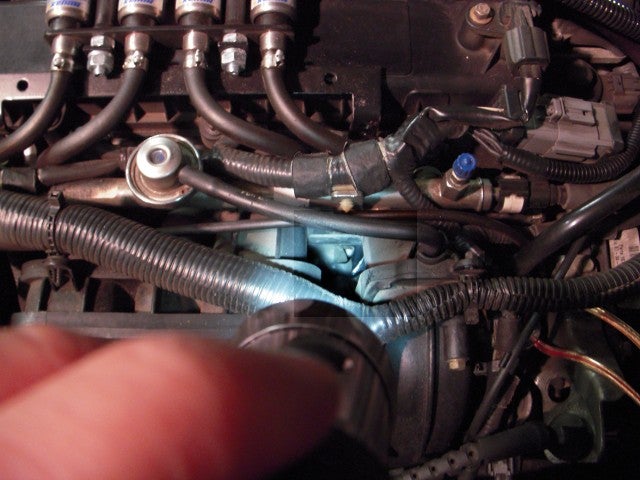
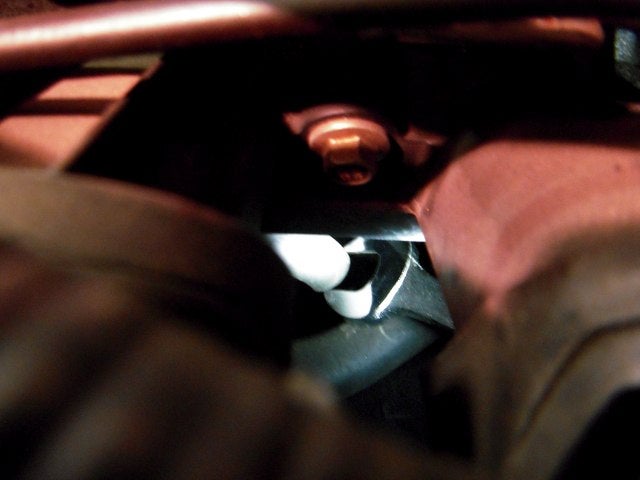




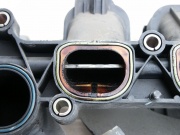

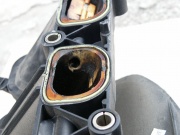

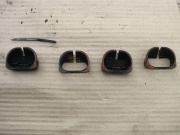
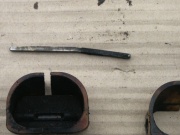
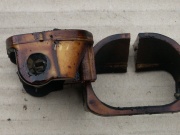

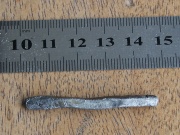
 Your Privacy Choices
Your Privacy Choices